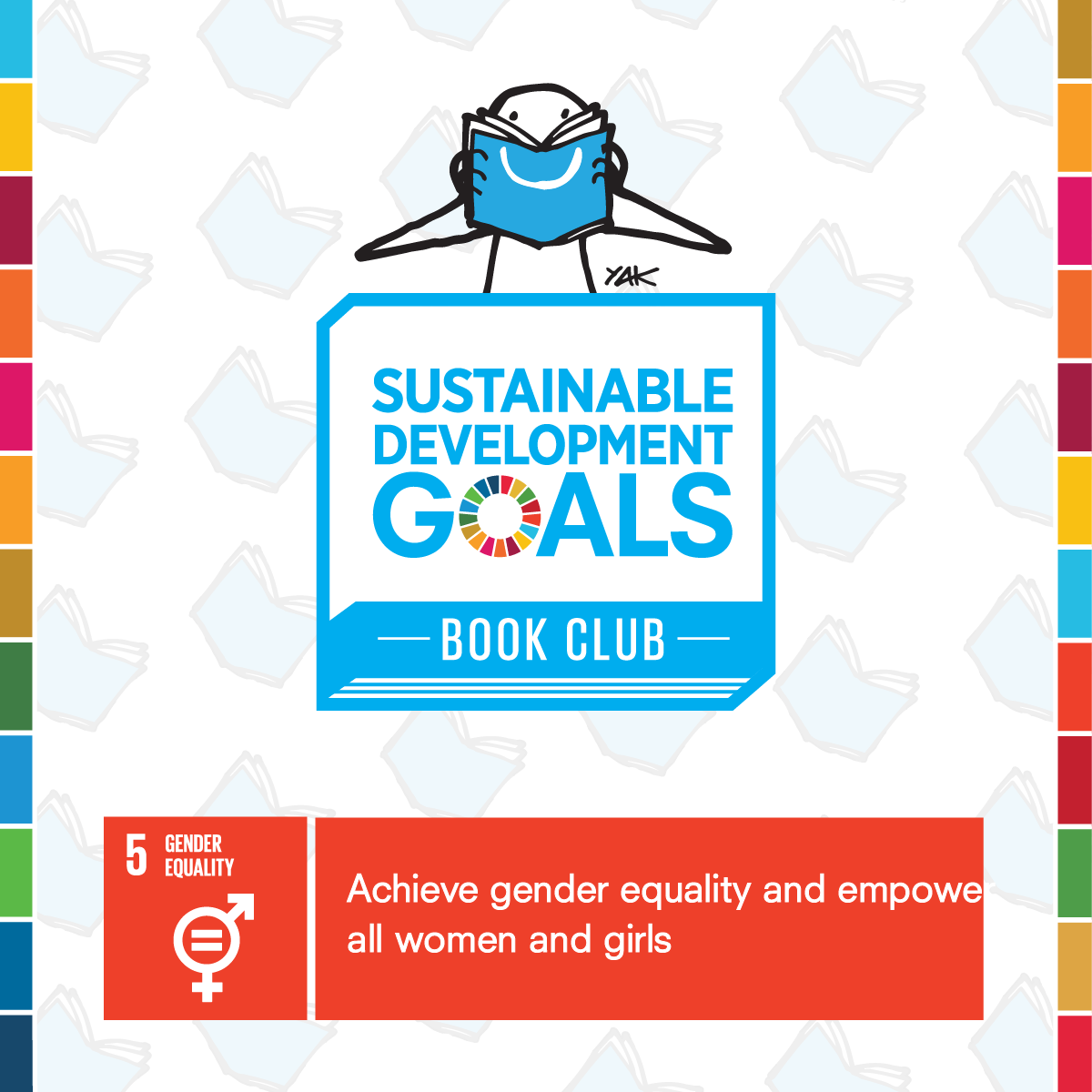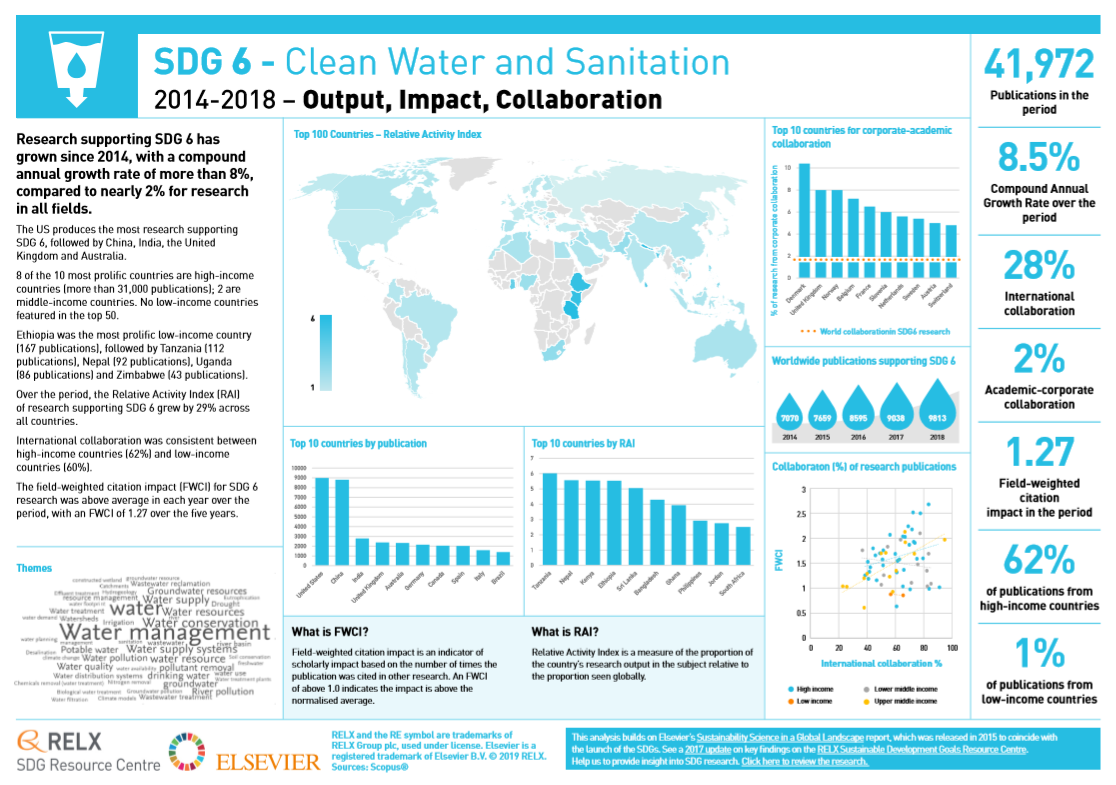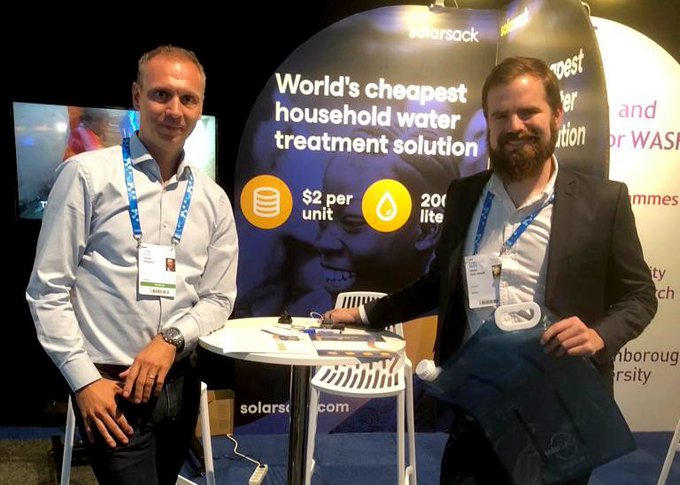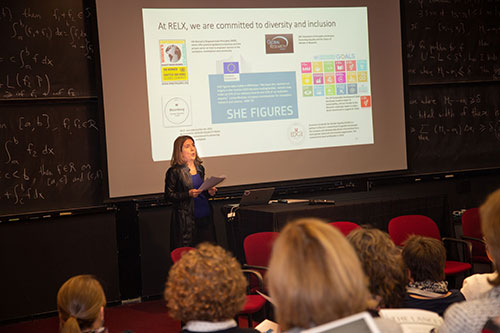The #SDGBookClub helps children learn about the Sustainable Development Goals. The book club presents a selection of books for children aged 5-12 on each of the goals. Check out the books that have been selected in support of Goal 5 - Gender Equality.
This article supports SDG 13 and 9 by investigating financial decision being made utilizing climate-risk assessments
This book chapter addresses SDG3 and 10 by investigating how Environmental Justice (EJ) is concerned with the fair distribution amongst social groups of environmental quality.
This report represents more than a decade of research on sustainable business. Together with the UN Global Compact Progress Report, it forms the world’s most comprehensive research to date on business contribution to the SDGs, advancing Goals 12 and 17.
The latest analysis of SDG-supporting research focusses on SDG 6: Clean Water and Sanitation. This graphic shows key metrics for research into clean water and sanitation.
RELX, a global provider of information-based analytics and decision tools for professional and business customers, has announced the winners of the 2019 RELX Environmental Challenge. The Challenge supports innovative solutions to improve SDG 6 (clean water and sanitation).
Linking to SDGs 6 (clean water and sanitation), 12 (responsible consumption and production) and 17 (partnerships for the goals), this website catalogues and facilitates water stewardship projects in river basins and regions around the world.
This chapter analyses the complex influence of climate change on vector borne diseases. It is perhaps expected that climate change will be invoked as a major driving force. The actual effect, however, is highly site specific suggesting that other factors play an equally important role.
This chapter focusses on e-waste, encompassing various forms of electrical and electronic equipment that are old, end-of-life electronic appliances. E-waste poses severe health risks to the populations, especially fetuses and children; toxic exposure is involved in the etiology of both chronic/noncommunicable diseases and infectious diseases. The e-waste widespread and chronic exposure in receiver countries poses an actual public health emergency.
Advancing SDG 5 (gender equality), Elsevier is preparing a new global gender and research report to promote gender diversity and advance gender equity using data and an evidence-based approach.




